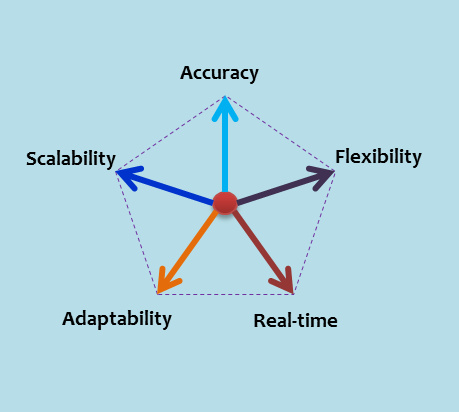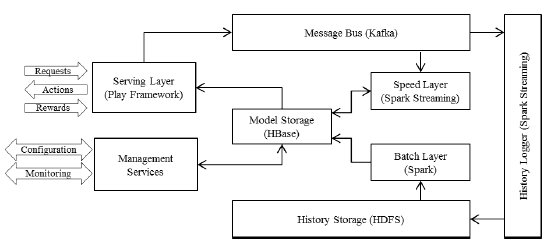What do the following scenarios have in common?
•A cooling system turns off one of its chillers to increase energy efficiency as the average server load in a data center decreases and the external temperature drops
•A lead generation system adjusts spending allocation across different digital marketing channels to maximize profit as it detects a decrease in customers’ lead processing rate
•A self-driving vehicle quickly applies the brakes to avoid a collision when the car in front of it stops suddenly
•An autonomous drone changes its speed and altitude, correcting its pre-defined flight plan in response to changing wind conditions
Each one of these scenarios conforms to the following pattern: current conditions are constantly monitored (e.g., average server load, external temperature, lead processing rate, distance to other vehicles, wind direction and speed); as a reaction to these conditions, actions are taken (e.g., turning off a chiller, adjusting channel spending, applying the car brakes, changing drone speed and altitude); and the consequence of a sequence of actions is the optimization of an important measure for the scenario (e.g., maximization of data center energy efficiency, maximization of profit, minimization of number of collisions, minimization of drone flight time). These are all examples of Artificial Intelligence in operation.
Before we talk more about Artificial Intelligence, let us define Artificial Intelligence (AI). The term has several definitions but from the discussion above, one could guess our preferred characterization: “AI is the study and design of intelligent agents that can perceive the surrounding environment and take actions that maximize their chances of success over a long period of time.” AI has application across a large spectrum of business domains, from management of chronic patients, to control of manufacturing processes, to autonomous vehicles and IoT, where AI is being applied to extract significant patterns and make decisions based on the billions of data points received from the connected devices. These benefits are driving rapid adoption of AI. A recent report from Narrative Science found that 35% of enterprises are already using AI technologies and 62% will use AI technologies by 2018.
Samsung AI Solutions Since its inception, Samsung SDS Research America (SDSRA) – the Big Data Analytics research lab of Samsung SDS America – has focused on developing a prescriptive engine that realizes the promise of AI. Five goals have driven this effort:
1.Scalability— to learn AI models from large numbers of interactions
2.Accuracy— to select the best action for a given context/state to maximize some specific business measures
3.Flexibility— applicability to multiple business domains and use cases; easy integration to existing systems
4.Real-time — to deliver high throughput/low latency decisions for real-time applications5.Adaptability— to continually learn from interactions and adapt to behavioral changes

The objective is to deliver a multi-purpose AI engine that can insert intelligence into existing applications, whether they’re a marketing lead generation system or a data center cooling control system. These applications interface with the AI engine by simply sending it their current state as determined by a set of features (e.g., average server load, external temperature) and receiving back the appropriate action (e.g., turn off chiller #1) for that state which will optimize the desired business metric (e.g., energy efficiency). The AI engine leverages a set of state-of-the-art distributed technologies allowing horizontal scalability in a cluster of commodity nodes. Also, from a machine learning perspective, the engine applies reinforcement learning algorithms and deep learning architectures, combining such advanced methods.

The Samsung SDSRA AI engine has already been fully battle tested in real world scenarios and has delivered high value in various business use cases, such as:
•Allocating digital marketing channels to optimize profit
•Personalizing omni-channel customer interactions to maximize lifetime value
•Selecting target customers for marketing campaigns to increase response
•Choosing an advertisements on public smart displays to maximize customer engagement
SDSRA continues to evolve the engine, implementing new algorithms, improving its scalability and ease of use, as we pursue new business applications that can benefit from our realization of AI.

Atul Varshneya is the VP of Technology, Artificial Intelligence R&D at Samsung SDS America. Within this role he is responsible for developing AI technology platforms for enterprise applications that focus on prescriptive capabilities.
- AI Ethics and AI Governance - The Social Responsibility of AI
- Multimodal AI That Thinks Like Humans
- Damages of Media Forgery and Companies that Offer Forgery Prevention Technologies
- Brightics Visual Search Claims 6th Place in NIST FRVT “Face Mask Effects” Category
- Cheapfakes on the Rise in Zero Contact Environments
- Is the Media You Are Watching "Real"?